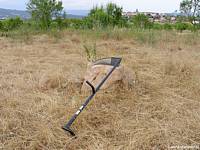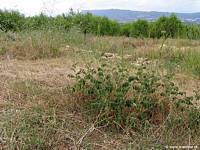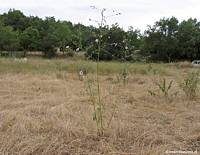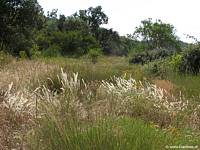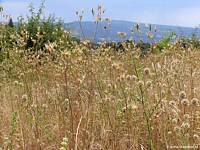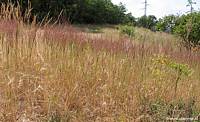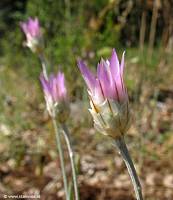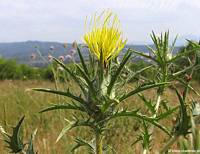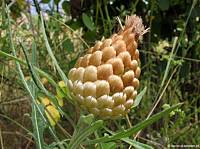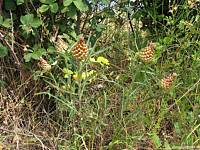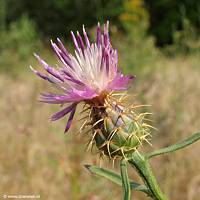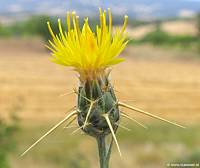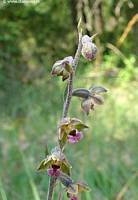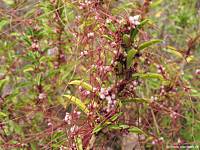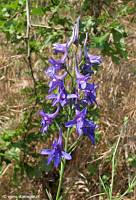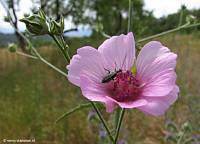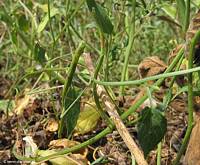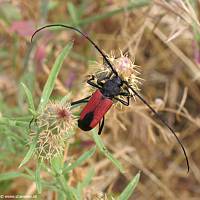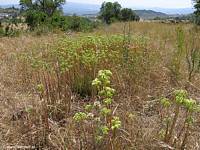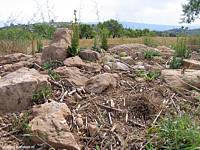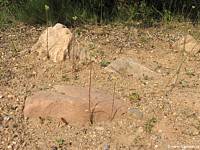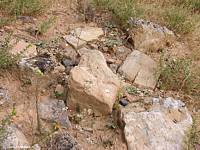|
|
Nature
Switched On
|
|
|
introduction |
2007 June 30 & July 1, Saturday and Sunday The summer has begun and this means
harvest time. In
the surrounding barley fields the harvesting is in full action and I
also have been busy cutting vegetation with a scythe. Tough work but
a nice exercise, using muscles I didn't even know I had them The question is if it is really necessary and for what. Well, I am far from sure if I am doing the right thing. It goes of course against the ideas of Louis Le Roy who defends the natural succession of the different vegetation stages. But I have never pretended to be an unconditional disciple and our situation is different in the sense that we want to live in this place and the conditions are Mediterranean.
Once I started to cut I really felt sorry for both plants and
animals and my reservations increased when I saw the final aspect of
a cut strip of grassland which was really much more dead and dry
than before.
The popular stringtrimmers (or weedwhackers) miss most of these advantages and cut the vegetation in small pieces what makes it more tiresome to collect it afterwards |
|
|
The scythe with a 45 cm blade. Lowest western terrace, looking north-east. Sunday 17:57 |
||
|
I avoided here a group of Agrimonia
eupatoria on the right and, at the back on the left, a group of
Althaea cannabina. |
||
|
An Althaea cannabina plant which
was spared together with some Verbascum sinuatum
specimen on the right. |
||
|
This is what the grassland looks like in areas I didn't cut (and
will never cut): yellow, brown and dry but far from dead. Plants are
still reacting to the wind, reflecting sunlight and harbouring a lot
of wildlife
|
||
| Melica
ciliata (Hairy melic grass) on the lowest eastern terrace. Looking north-west. Photograph taken on Sunday 24 June 18:14 |
Fructifying Lomelosia stellata
and Crupina vulgaris and green Chondrilla juncea. Lowest eastern terrace. Looking east. Sunday 12:04 |
|
|
Aegilops triuncialis on the higher terrace in the centre.
Looking north-west. Photograph taken on Sunday 24 June 17:26 |
||
|
Especially prominent of the flowers that start to bloom these days are the Knapweeds and Thistles of the Asteraceae family. To the ones I mentioned two weeks before I can add 5 more. The close-ups of the flowers show the exceptional beauty and variety of their spines and bracts.
|
||
| Carthamus lanatus is a fearsome weed in America and Australia covering huge impenetrable areas. On the terrain it is restricted to some modest areas. Photograph taken on Sunday 24 June 10:44 |
Xeranthemum inapertum,
an annual on the highest eastern terrace. Photograph taken on Saturday 23 June 10:41. |
|
| The
bracts of Leuzea conifera have taken over protagonism
from the petals and give the flower the look of a pine cone. Sunday 12:12 |
The only plant of Leuzea
conifera; on the lowest oriental terrace. Sunday 12:10 |
|
|
Centaurea aspera seems to have important anti diabetes
effects. Photograph taken on Sunday 24 June 17:47 |
Centaurea melitensis
(Maltese starthistle) is another example of a thistle that has
invaded North-America. Just a few specimen on the terrain. Sunday 11:07 |
|
|
Orchid number seven started flowering last week: it is another member of the Epipactis genus, with smaller leaves than Epipactis helleborine and I suppose it is Epipactis microphylla. It grows in the half-shade of the wood and I have detected three specimen so far.
Cuscuta (Dodder) is a genus of parasitizing plants and one of
its members was attacking a shrub of Satureja
montana.
The next photograph is a close-up of an Althaea cannabina
(Hemp-leaved marshmallow) flower. Photographs in the anterior section
about grass cutting showed already the long slim stems and open
structure of this remarkable plant. Like the species it has taken its
Latin name from (Cannabis) the plant is also cultivated for the
fibre to make fabric and paper. It prefers relatively humid soil
conditions and that's why it probably only grows in the lowest area
of the lowest terrace.
This weekend also many flowering plants of the annual Delphinium halteratum. |
||
|
Epipactis microphylla on the higher central terrace
near the wood. Photograph taken on Saturday 23 June 10:30 |
||
|
A Cuscuta species on
Satureja montana. Sunday 12:17 |
||
|
Althaea cannabina on the lowest western terrace. Photograph taken on Sunday 24 June 11:10 |
Delphinium halteratum
on the lower western terrace. Photograph taken on Saturday 23 June 11:01 |
|
|
From the animal front just two nice pictures of insects. The first one shows the amazing camouflage of the walking stick Clonopsis gallica (PSG 45 for the insiders). The other one shows a Purpuricenus budensis (identified by Manuel Lorenzo) on Centaurea aspera. |
||
|
Clonopsis
gallica (PSG 45). Photograph taken on Sunday 24 June 10:51 |
Purpuricenus
budensis on Centaurea
aspera. Photograph taken on Sunday 24 June 17:44. |
|
|
Two weeks ago I
commented on the state of the Sedum plantings. We f With respect to the plantings, there is a striking
contrast between the plantings on the lowest part of the lower
terrace and the plantings on the highest part of the terrain. On the
lower terrace the soil will be quite more humid and in this
particular area there will be also more nutrients available, because
the soil has been moved recently.
|
||
|
Spontaneous Sedum sediforme on the highest eastern
terrace. Saturday 11:51 |
||
|
Planted Sedum
sediforme with Sedum album and Sempervivum
tectorum on the lowest western terrace. Photograph taken on Sunday 24 June 10:28 |
||
|
Rickety plants of Sedum sediforme which seem to
have chosen to flower before it is too late. Higher central terrace near the wood. Sunday 9:46 |
Another stonegroup nearby with
slightly better results for Sedum sediforme but
Sedum album is showing stress flowering. Sunday 9:50 |
|
|
introduction
|
|
